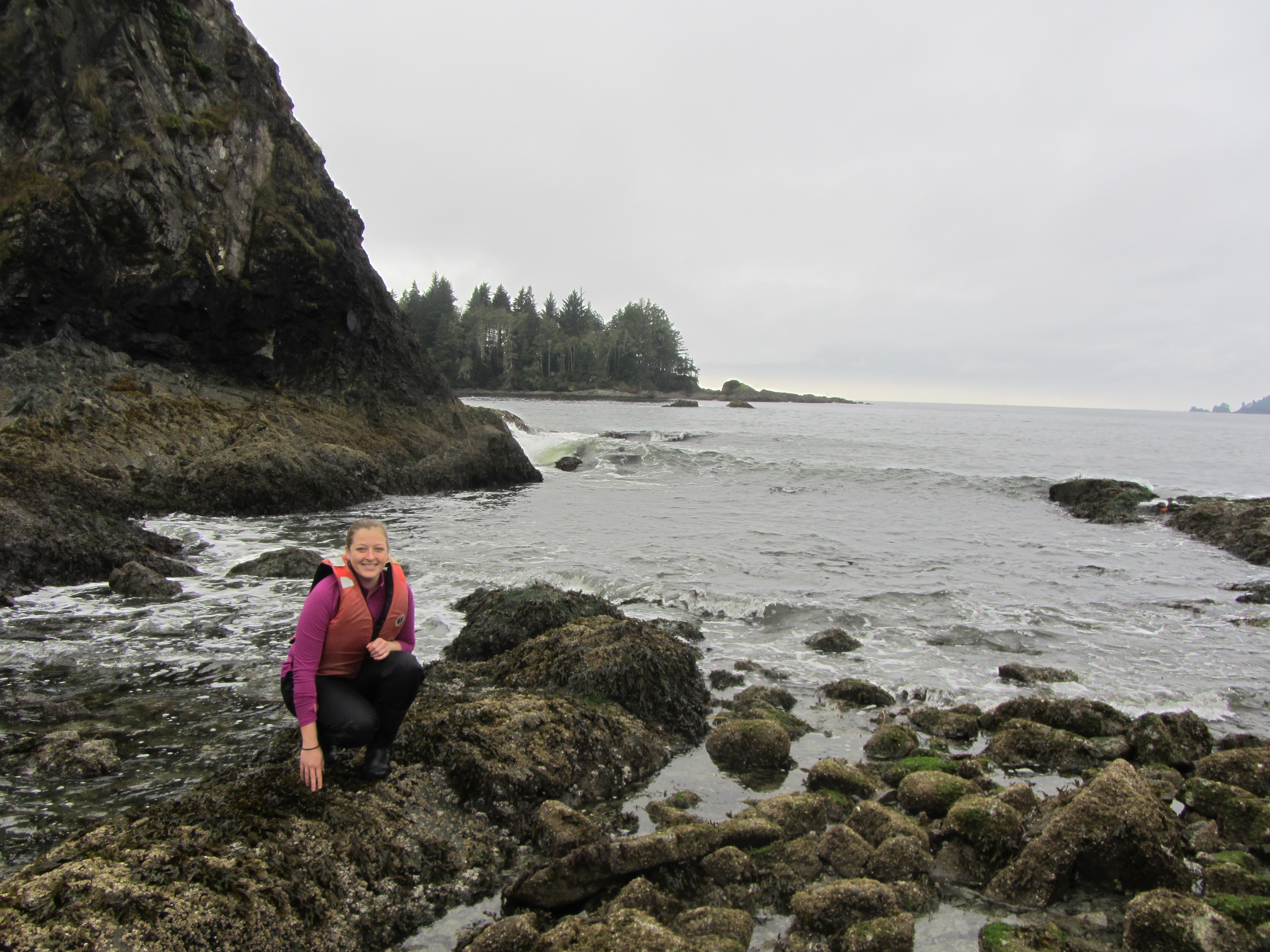
My passion for all things water began in a typical way: with a formative childhood experience. When I was eight years old, you could find me knee-deep in the creek near my house, gathering algae and tadpoles to construct a backyard frog sanctuary in an old metal tub. Eventually, a new highway was built and my creek and outdoor laboratory dried up. The frogs that once littered the creek beds disappeared, and I began to question what shaped the environment around me and how I could sustain it.
However, I did not have dreams of becoming a scientist until much later. I went to UC Davis undecided on my major, with the idea that I might settle on something with an environmental focus. It wasn’t until I stumbled upon a joint program with the Bodega Marine Laboratory that I decided to switch to biology. My spring quarter at the marine lab was easily the best of my undergraduate career.
Our first field trip was to the mudflats and seagrass meadows near Bodega Harbor. Sinking into the mud, I felt like a kid in the creek again. I fell in love with the seagrass beds, an important nursery habitat for many species, after we hauled in (and later released) dozens of shrimp, crab, and baby fish in our beach seine. I developed a research project monitoring the presence of juvenile flatfish, and thrived having autonomy over a project that got me out into the mud and seagrass every week. Following graduation and a brief stint as a geochemist, I knew that I needed to get back to the water.
I went on to pursue my masters in zoology at the University of British Columbia. Here, I studied the effects of warming on freshwater algae, and how these effects might impact the herbivores who rely on the algae for food. Spending my days doing science was intellectually stimulating, but I wondered how my research could be applied to the real world, and was driven by a desire to have a bigger impact. I wanted to support science, advocate for science, and encourage the use of science in decision-making without devoting my days to the lab.
I landed at the Gordon and Betty Moore Foundation, where I worked in the Science Program. My work at the Moore Foundation afforded me the opportunity to work with researchers and nonprofit entrepreneurs across fields like astronomy, computer science, and ecology. I supported people with groundbreaking ideas, like Joanna Slusky, who is developing a protein that could re-sensitize bacteria to common antibiotics, potentially overcoming drug-resistant superbugs. Life as a funder offered a birds-eye-view of the field, but I missed having my boots on the ground. Ultimately, I was inspired by the community of grantees to join them on the front lines, and again felt a pull to return to my aquatic roots.
As I join California Coastkeeper Alliance, I am struck by the variety and scale of the issues facing the state and the obvious passion with which CCKA and its member Waterkeepers approach them. I am excited to support this work, especially where I can deploy my background in climate change research. As Program Manager, I look forward to collaborating with and supporting our Waterkeepers and other partners across the state. I hope that my perspective as a former funder and researcher can make our movement stronger, and that the Waterkeeper scientists and advocates in the field will afford me the chance to get my feet wet along the way.

Associate Director Natalie Caulk provides operational leadership and manages the ongoing implementation of programs and partnerships of CCKA.



